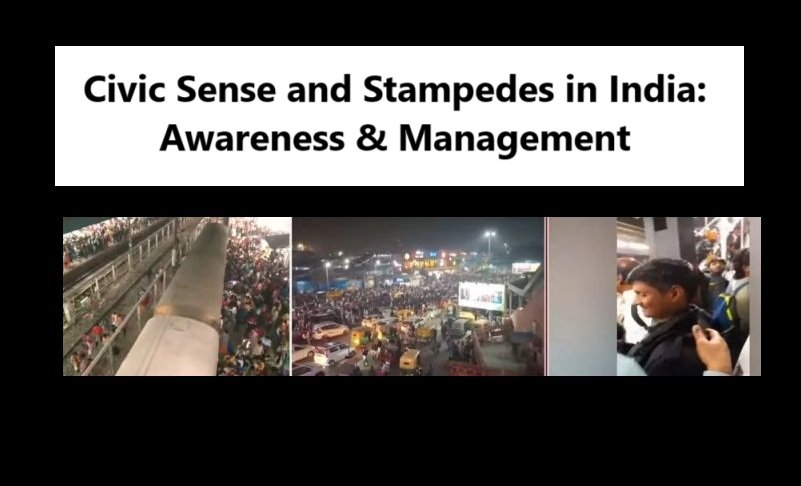
Civic sense, or the awareness and responsibility of individuals towards their community, plays a crucial role in maintaining order and safety in society. In India, where large gatherings are a common occurrence at religious festivals, political rallies, and public events, the lack of civic sense often contributes to chaos, mismanagement, and sometimes tragic stampedes.
Understanding Civic Sense
Civic sense encompasses basic etiquette such as following traffic rules, maintaining cleanliness, respecting public property, and adhering to crowd management protocols. Unfortunately, the lack of civic awareness can lead to disorderly behavior, making public spaces unsafe. In events with large crowds, this disregard for discipline can escalate into dangerous situations, including stampedes.
Causes of Stampedes in India
Stampedes in India have occurred in religious congregations, political gatherings, and even public transport hubs. Some major causes include:
- Overcrowding: Many events attract far more people than the venue can safely accommodate.
- Poor Crowd Management: Inefficient security measures and lack of trained personnel contribute to mishandling large gatherings.
- Panic and Misinformation: Rumors, sudden loud noises, or emergency situations can cause panic, leading to people rushing in different directions.
- Lack of Proper Infrastructure: Inadequate entry and exit points, poorly planned pathways, and weak barricading often exacerbate the problem.
- Impatience and Lack of Discipline: People pushing and rushing to get ahead can trigger deadly stampedes.
Notable Stampedes in India
A tragic stampede at New Delhi Railway Station on February 15, 2025, claimed at least 18 lives as thousands rushed to board trains heading to the Maha Kumbh festival in Prayagraj. Confusion over platform changes led to a panic-induced surge on a crowded footbridge. Meanwhile, in Prayagraj, another stampede at the Maha Kumbh Mela resulted in multiple casualties as pilgrims thronged to take a holy dip in the Ganges. Authorities have launched investigations into both incidents, highlighting the urgent need for better crowd management at mass gatherings in India.
Several deadly stampedes have occurred in India, claiming numerous lives. Some notable incidents include:
- Ratangarh Temple Stampede (2013): A stampede at a temple in Madhya Pradesh resulted in over 115 deaths when a rumor about a bridge collapse led to panic.
- Godavari Pushkaram Stampede (2015): During a religious festival in Andhra Pradesh, overcrowding led to a stampede, killing 27 people.
- Elphinstone Bridge Stampede (2017): In Mumbai, a rush-hour crowd at a railway station bridge caused a stampede that killed 23 people.
The Role of Authorities and Public Awareness
Preventing stampedes requires both government intervention and public cooperation. Some measures that can help include:
- Better Planning: Authorities must assess crowd size and ensure appropriate infrastructure before hosting large-scale events.
- Public Awareness Campaigns: Educating people on responsible behavior in crowds can significantly reduce panic-induced incidents.
- Strict Law Enforcement: Implementing stricter crowd control policies and ensuring adherence to safety protocols can help prevent disasters.
- Use of Technology: Surveillance cameras, AI-based crowd monitoring, and real-time alerts can help authorities manage gatherings more efficiently.
Conclusion
Civic sense is the foundation of a well-organized society. In India, where mass gatherings are common, improving public awareness and ensuring efficient crowd management are essential to preventing stampedes. By fostering a culture of discipline, patience, and adherence to safety norms, both citizens and authorities can work together to create safer public spaces for everyone.





